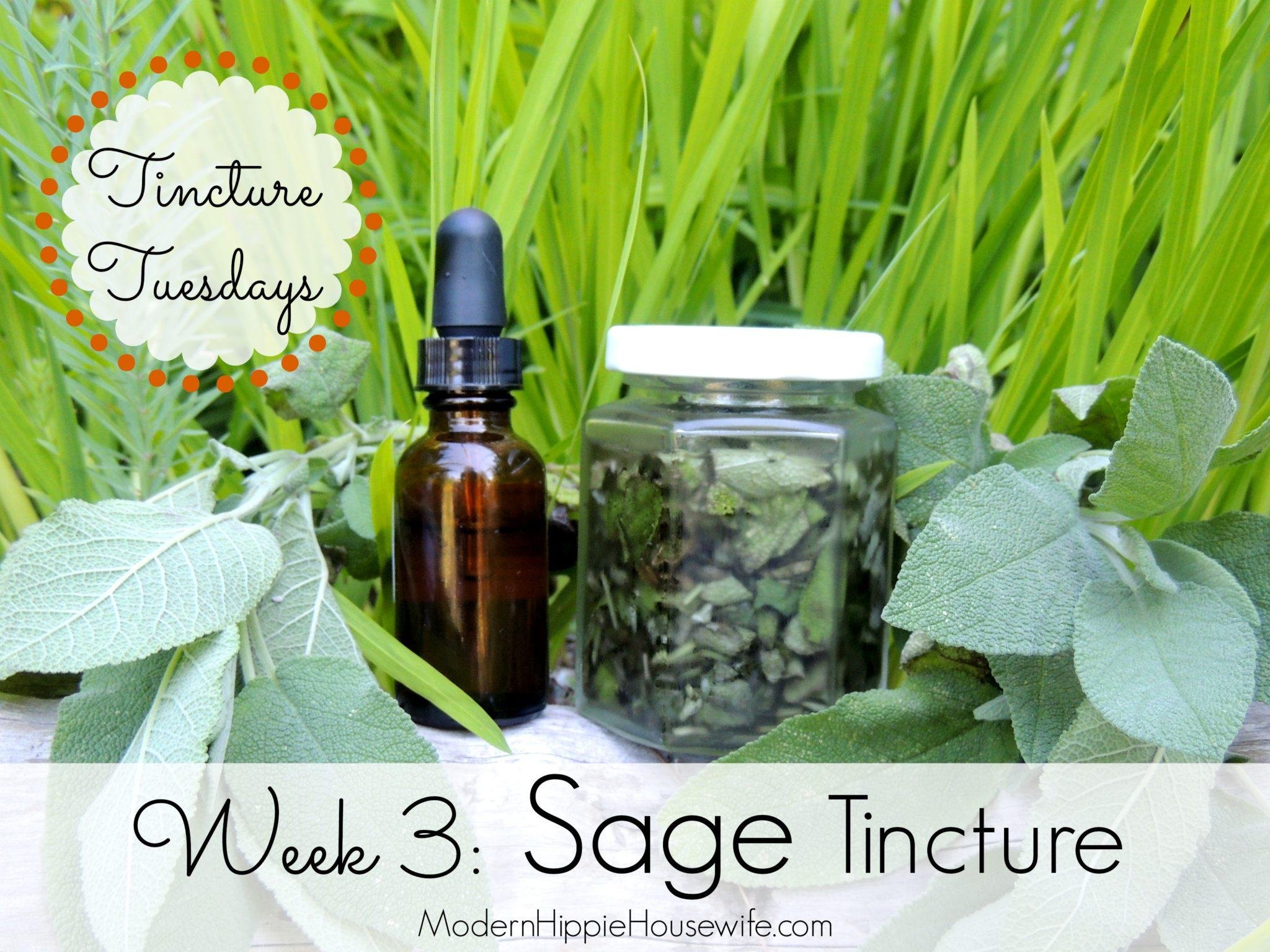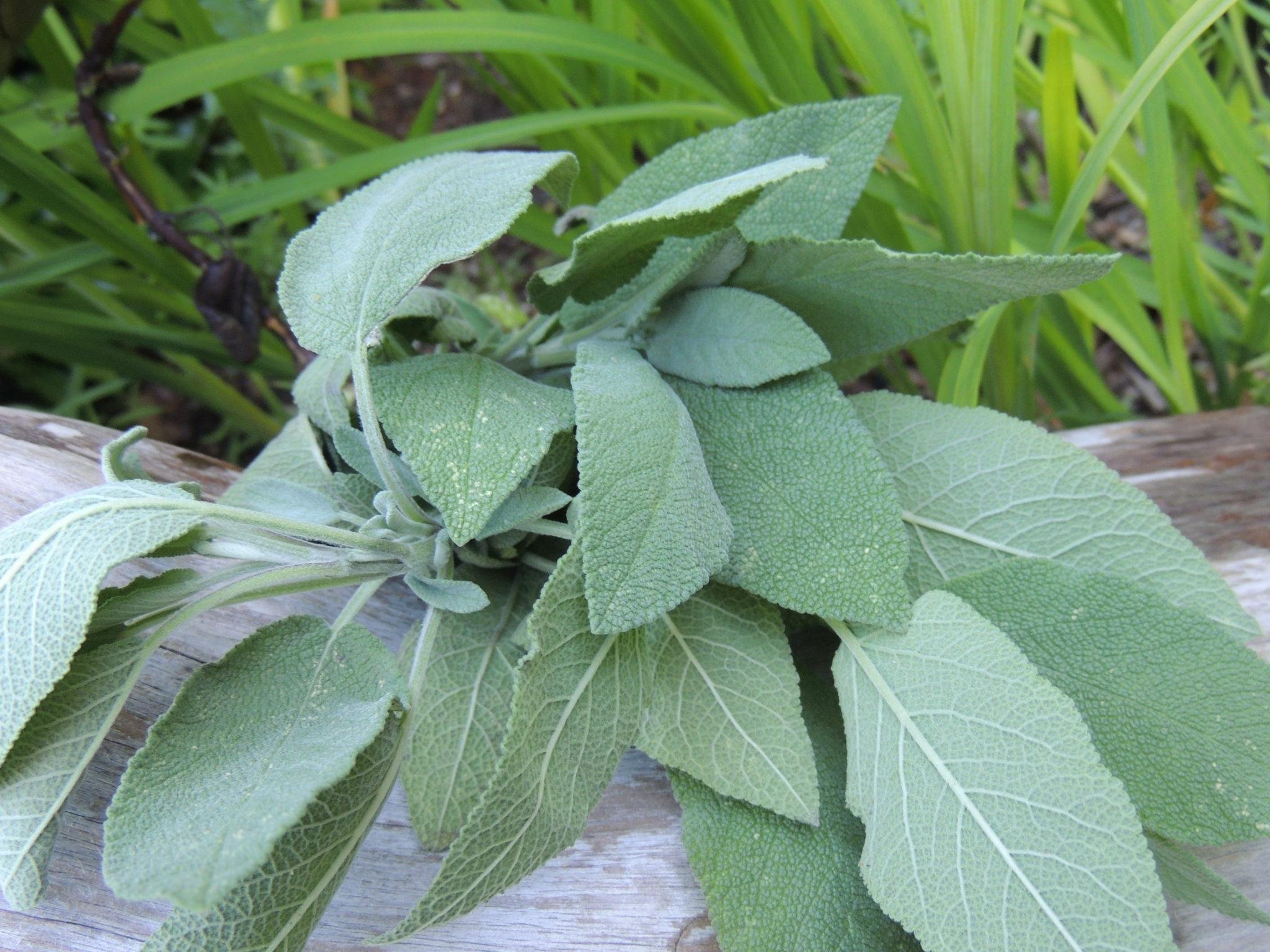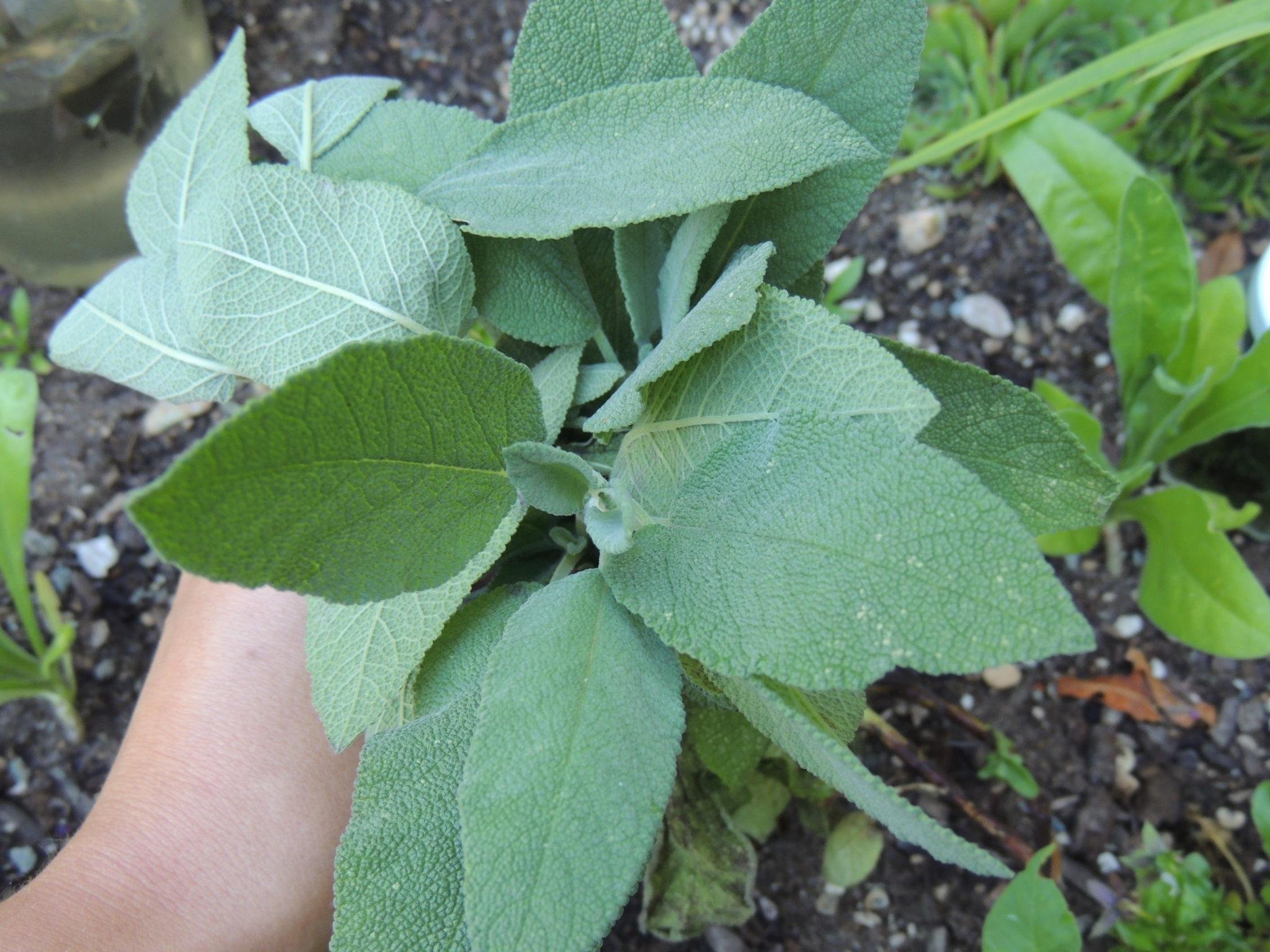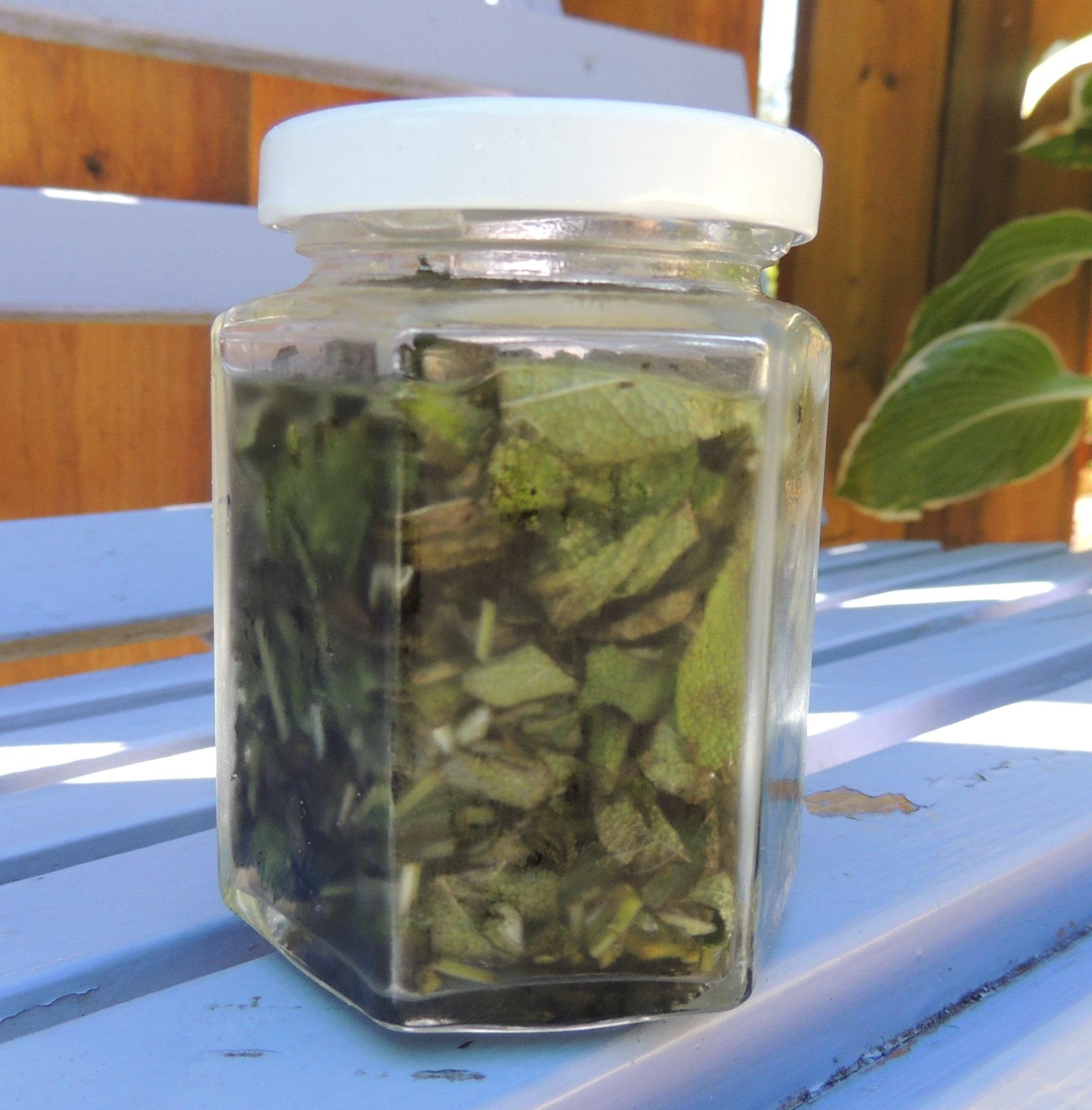How to Make a Sage Tincture

*This information is based on my own research and reading–I always encourage you to do your own research too. Consult your doctor if you are considering changing, or going off, any medication (read my full disclaimer/disclosure here.)*
This Tincture Tuesday, we're talkin' all about Sage! Yup, the same herb you use in your salad dressings and seasonings. You may not have known that, aside from spicin' up your life, sage has some powerful, medicinal properties. Medicinally, sage has been used for thousands of years for it's anti-bacterial and anti-fungal properties. The ancient Greeks named sage "the immortality herb." The Egyptians considered sage to be the giver and saver of life, and used it to treat plague victims. The Romans used it to promote female fertility, and in the Middle Ages, it was prescribed to enhance longevity of life.Sage's strong antibacterial properties make it an ideal cold and flu remedy, and externally, as an anti-septic for cuts, burns and sores. Sage is also a diuretic, which makes it a good detoxifying remedy, and has a beneficial effect on the liver.
Medicinally, sage has been used for thousands of years for it's anti-bacterial and anti-fungal properties. The ancient Greeks named sage "the immortality herb." The Egyptians considered sage to be the giver and saver of life, and used it to treat plague victims. The Romans used it to promote female fertility, and in the Middle Ages, it was prescribed to enhance longevity of life.Sage's strong antibacterial properties make it an ideal cold and flu remedy, and externally, as an anti-septic for cuts, burns and sores. Sage is also a diuretic, which makes it a good detoxifying remedy, and has a beneficial effect on the liver. Every woman, regardless of age, would benefit from keeping a sage tincture in their medicine cabinet, as this herb holds many beneficial properties for woman, specifically. "Sage contains phytosterols, reported to have a cooling action. In one study, using an infusion of the leaf reduced sweating by as much as half." This effect has been found to help menopausal women ease hot flushes and sweats. For nursing mothers, sage has been used to reduce engorgement and help ease mastitis. It can also be taken to treat painful or irregular periods and bloating. A sage-tea can be used as a hair rinse to treat dandruff, oily hair, or scalp infections. This is called "Tincture Tuesday," not "Tea Tuesday," so I won't talk about herbal teas in the future, but I know a friend whose partner could benefit from this hair rinse, so... Using dried, or fresh-wilted sage, pour about a cup of boiling water over about 1/4-1/2 cup of chopped sage (use less if using dried sage.) Let the sit, and cool completely before straining the sage and massaging it into the scalp. Leave it to soak on the scalp for about 10 min before rinsing. I imagine it's probably best to do this is in the shower.
Every woman, regardless of age, would benefit from keeping a sage tincture in their medicine cabinet, as this herb holds many beneficial properties for woman, specifically. "Sage contains phytosterols, reported to have a cooling action. In one study, using an infusion of the leaf reduced sweating by as much as half." This effect has been found to help menopausal women ease hot flushes and sweats. For nursing mothers, sage has been used to reduce engorgement and help ease mastitis. It can also be taken to treat painful or irregular periods and bloating. A sage-tea can be used as a hair rinse to treat dandruff, oily hair, or scalp infections. This is called "Tincture Tuesday," not "Tea Tuesday," so I won't talk about herbal teas in the future, but I know a friend whose partner could benefit from this hair rinse, so... Using dried, or fresh-wilted sage, pour about a cup of boiling water over about 1/4-1/2 cup of chopped sage (use less if using dried sage.) Let the sit, and cool completely before straining the sage and massaging it into the scalp. Leave it to soak on the scalp for about 10 min before rinsing. I imagine it's probably best to do this is in the shower.
The Benefits of a Sage Tincture
Take one adult dose, about 2 droppersful, to ease any of the following:Internally
 Cold and Flu symptoms
Cold and Flu symptoms- Sore throat (gargle before swallowing)
- Fever
- Chest infection
- Arthritis
- Gout
- Loss of appetite (sage helps to stimulate appetite)
- Irregular, or painful periods and bloating
- Hot flashes and sweats for menopausal women
- Breast engorgement (for nursing mothers)
Externally (used as an antiseptic)
- Cuts
- Wounds
- Mild burns
Did you miss week one's post, Tinctures 101? If so, read it first learn how to make a tincture, and why I've decided to incorporate them in to my medicine cabinet. My sage tincture is extra special--it's made with Kettle One vodka, from my secret vodka stash...I've been known to indulge in a dirty, vodka martini from time-to-time. Although, I don't recommend buying expensive vodka for tinctures. The cheap stuff will do. Tinctures are not consumed for their taste... they're actually pretty nasty.I used about a 1/2 cup of sage, which unlike the lemon balm tincture, I chopped before stuffing in to a small jar and covering it with alcohol.Strain after 4 weeks, then proceed to make a double-infused tincture, if you wish.Transfer the strained, infusion to a tincture bottle, and label "Sage Tincture," along with a few of the medicinal properties listed above.Tincture bottles are for sale locally (2 for $5), at Flo's Body Piercing Studio (my mom), in Sechelt, B.C.
My sage tincture is extra special--it's made with Kettle One vodka, from my secret vodka stash...I've been known to indulge in a dirty, vodka martini from time-to-time. Although, I don't recommend buying expensive vodka for tinctures. The cheap stuff will do. Tinctures are not consumed for their taste... they're actually pretty nasty.I used about a 1/2 cup of sage, which unlike the lemon balm tincture, I chopped before stuffing in to a small jar and covering it with alcohol.Strain after 4 weeks, then proceed to make a double-infused tincture, if you wish.Transfer the strained, infusion to a tincture bottle, and label "Sage Tincture," along with a few of the medicinal properties listed above.Tincture bottles are for sale locally (2 for $5), at Flo's Body Piercing Studio (my mom), in Sechelt, B.C.

